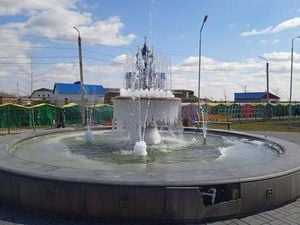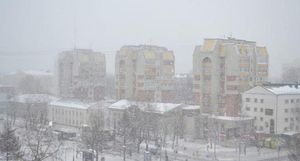Avalanche Canada has issued a stark warning for anyone considering heading out to British Columbia's backcountry: incoming winter weather is set to cause a "major increase" in avalanche danger. The forecaster notes, after nearly three weeks without significant snow, layers have formed on the ground, creating weak bonds with any new snow accumulation. This is expected to result in large and dangerous avalanches, potentially triggered by either natural conditions or human activity.
Environmental forecasts are now aligning with these warnings as Environment Canada anticipates varied wintry conditions affecting the south coast over the next few days. Rain is expected to blanket the North Shore and Metro Vancouver, but forecasters also predict a cold front sweeping through the region by Friday afternoon. This change will usher in "a quick burst of heavy snow" particularly targeting areas like eastern Vancouver Island and the Sunshine Coast.
The low pressure system moving through is forecasted to bring up to 20 centimeters of snow to the central coast before making its way to the central Interior by the end of the day on Friday. Snowfall warnings are already encompassing much of the Interior, where Environment Canada cautions about potential accumulations of up to 25 centimeters. Drivers are urged to expect deteriorated travel conditions and reduced visibility as the wintry weather sets in.
Lower Mainland residents should brace for even more disruptions, according to the special weather statement from Environment and Climate Change Canada. With temperatures dropping significantly—up to eight degrees below the seasonal average—some areas may see flurries, with overnight temperatures skirting near or below zero. This shift could result in slippery conditions as Arctic air begins to invade the region.
Derek Lee, a meteorologist with Environment Canada, highlighted the incoming system during discussions on Thursday, January 30, noting the potential for significant snowfall as two wet weather systems converge on the Lower Mainland. He cautioned, "It's not like a system where a whole cloud is producing snow over an area and then moves away; it is rotating narrow bands of precipitation." The challenge presented by such unpredictable systems lies in the severity of snowfall totals, which may vary dramatically across neighboring regions.
Residents from Richmond, Burnaby, New Westminster, Surrey, Delta, and Vancouver can expect rainfall between 20 to 40 millimeters, with warnings issued for Coquitlam, Maple Ridge, and the North Shore mountains, where over 50 millimeters may fall. Conversely, higher territory could see accumulations of up to four centimeters of snow, with mixed precipitation outlooks persisting for lower elevations.
Lee stressed the severity of the conditions even more: "I want to emphasise we could get a lot of snowfall. The temperatures are low enough for snow to stick around and present hazards. It could be nothing or it could be quite significant." The looming changeover from rain to snow may bring fear of rapidly increasing snowfall, reducing highway visibility quickly. Coupled with gusting interior 30 km/h winds, the realities of Arctic outflow create even more frigid sensation, with temperatures dropping to as low as -3 to -4 degrees overnight and feeling as cold as -5 to -10 with wind chills.
Environment Canada will continue to monitor and issue necessary snowfall and Arctic outflow warnings, emphasizing the importance of readiness for both drivers and outdoor enthusiasts as conditions transform like clockwork over these next few days. Lee concluded with practical advice: "Anyone going outside also needs to be mindful," as conditions can shift dramatically, creating hazards on highways and trails alike.
Following the warnings and predictions, those wishing to venture outside are encouraged to adopt safety precautions, especially on travel routes. Utilizing winter tires and chains where required, alongside checking current road conditions with Drive BC, remain imperative practices. Residents can also stay informed via hyperlocal forecasts covering over 50 neighborhoods within the Lower Mainland, ensuring they aptly remain updated on weather conditions as they evolve during this busy winter season.



